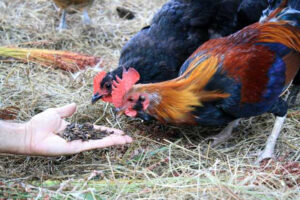Insect farming has been heralded as a transformative approach to waste reduction and resource recovery. The process involves breeding insects that feed on organic waste, converting it into valuable by-products like protein-rich animal feed and nutrient-dense fertilizers. While the concept is promising, it’s essential to critically assess the sustainability and actual waste reduction capabilities of insect farming. This article explores various insects used for organic waste upcycling, the methods employed from small-scale farms to industrial giants, and the realities of environmental, social, and governance (ESG) factors in the industry.
Varieties of Insects in Organic Waste Upcycling The most common insects used in organic waste upcycling include:
Black Soldier Fly Larvae (BSFL): Renowned for their voracious appetite, BSFL can consume vast amounts of organic waste. Their ability to convert waste into high-quality protein and fat makes them ideal for animal feed. They also produce frass, an excellent organic fertilizer.
Crickets: Crickets are another popular choice for insect farming due to their high protein content. However, they typically require a diet supplemented with grain-based feed, which can offset some of the waste reduction benefits.
Mealworms: These insects are effective at breaking down waste and are used for both animal feed and human consumption. Mealworms can thrive on a variety of waste products, including plastics, potentially offering a solution to synthetic waste.
Earthworms: Often used in vermicomposting, earthworms break down organic waste and create a nutrient-rich end product. They are less commonly used for feed compared to other insects.
Smallholder Farmers vs. Industrialized Operations Smallholder farmers often utilize low-cost, low-tech methods to farm insects. They rely on ambient temperatures, simple containers or open systems, and local labor. These methods can be sustainable as they integrate well into the local ecosystem and provide additional income for farmers.
In contrast, large-scale industrialized insect farming operations use advanced, controlled environments that can require significant energy inputs. These systems often involve automated feeding, harvesting, and climate control, which can increase efficiency but also energy consumption.
Sustainability and ESG Considerations The sustainability of insect farming is multifaceted. Smallholder methods boast low carbon footprints, support local economies, and align well with ESG principles. However, they may face challenges in scaling up and maintaining consistent production levels.
Large-scale operations can produce insects on a mass scale, contributing to significant waste reduction. However, the importation of soy-based feeds for certain insects, like crickets, and the high energy requirements for temperature control can diminish some environmental benefits.
Critical Examination of Waste Reduction Insect farming’s waste reduction claims merit a critical examination. In cold climates where many large insect farming companies operate, the need for temperature control results in high energy use. Additionally, if these companies import feed for insects, the net waste reduction can be less impactful.
Conversely, in the developing world, where organic waste is often already effectively upcycled, the introduction of insect farming needs to offer clear advantages. It must be economically viable, culturally acceptable, and environmentally beneficial, considering the local context where waste streams may already be efficiently utilized.
Conclusion Insect farming presents a compelling case for waste reduction and resource recovery. However, its true sustainability requires a balance between low-tech approaches that empower smallholder farmers and high-tech methods that promise scalability and efficiency. Both methods have strengths and drawbacks, and the best approach may vary by region and waste stream. Ultimately, the global challenge is to integrate insect farming into a holistic waste management strategy that maximizes benefits while minimizing environmental impacts.






0 Comments